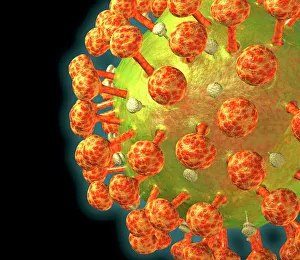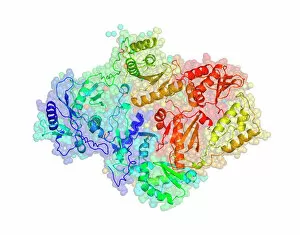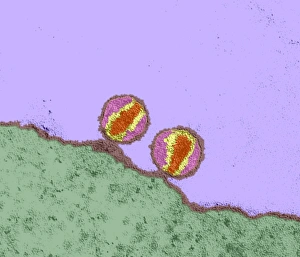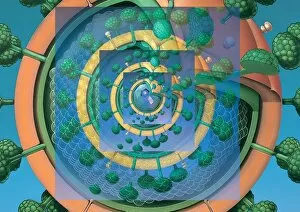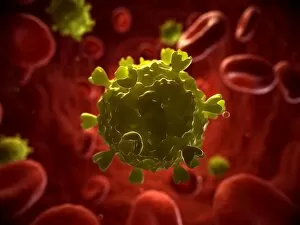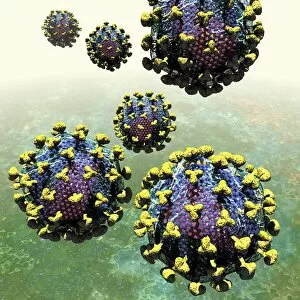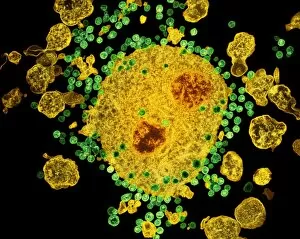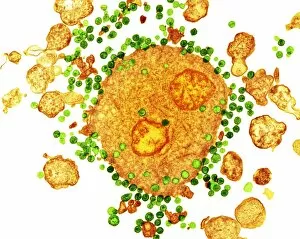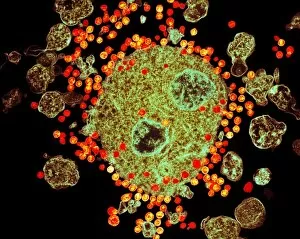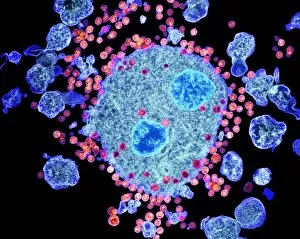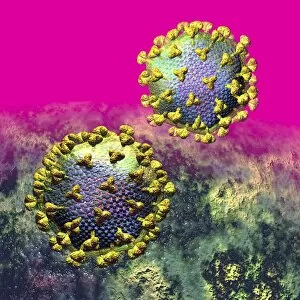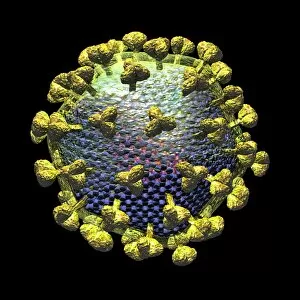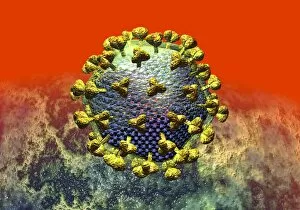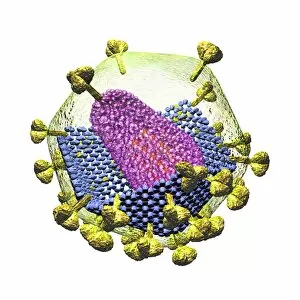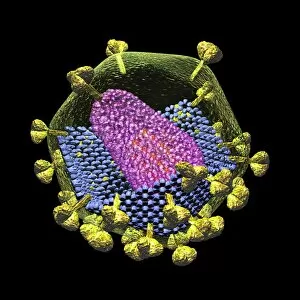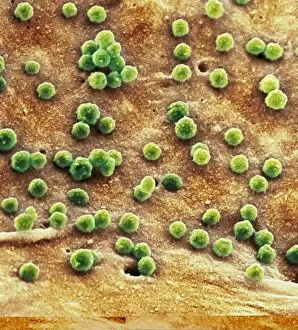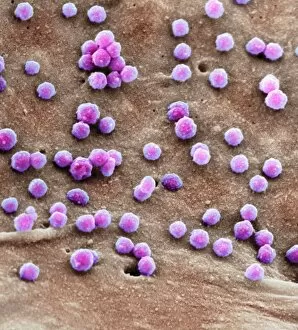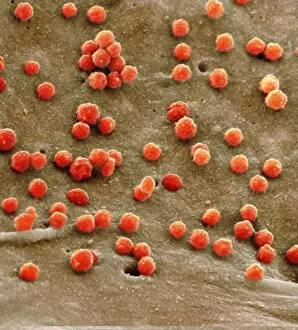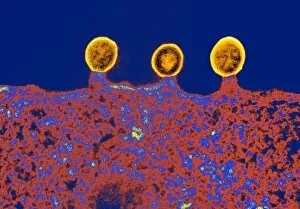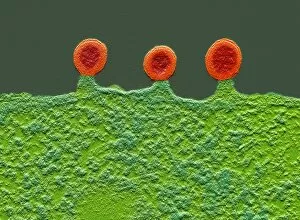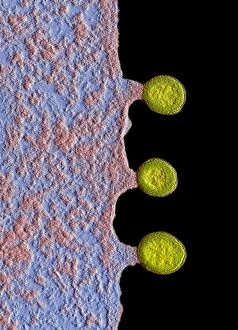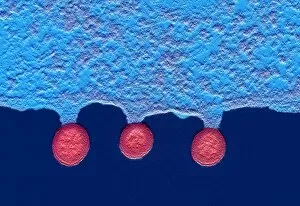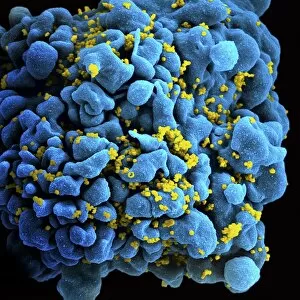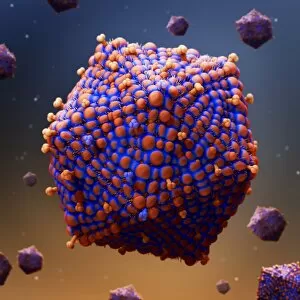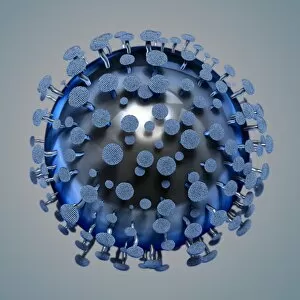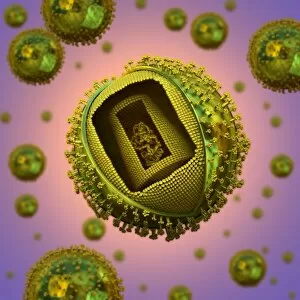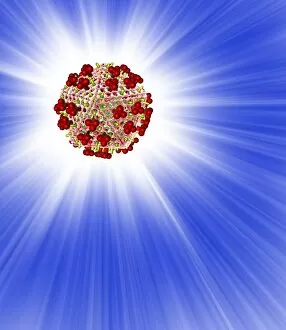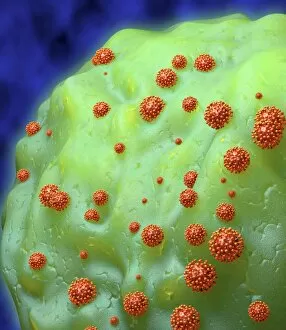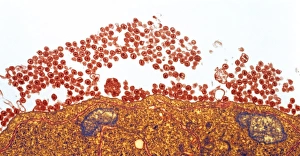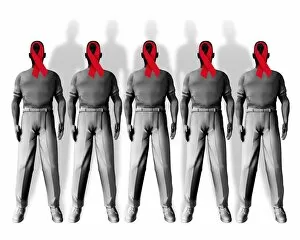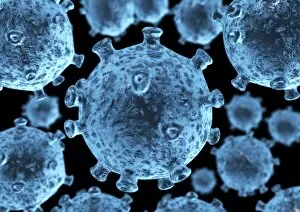Acquired Immune Deficiency Collection
"Unveiling the Intricacies of Acquired Immune Deficiency: A Closer Look at HIV and AIDS" Captivating our attention
All Professionally Made to Order for Quick Shipping
"Unveiling the Intricacies of Acquired Immune Deficiency: A Closer Look at HIV and AIDS" Captivating our attention, an intricate image reveals the structure of a single HIV particle, highlighting its unique characteristics. The remarkable HIV reverse transcription enzyme takes center stage in this captivating visual, showcasing its crucial role in the replication process. Through a powerful SEM image, we witness an HIV infected macrophage, providing insight into how these immune cells become hijacked by the virus. In a striking TEM capture, countless HIV viruses are showcased as they swarm within their host cell – a chilling reminder of their destructive potential. The notorious AIDS virus is depicted here through thought-provoking artwork, emphasizing the urgency to understand and combat this global health crisis. 6-8. Artistic representations shed light on the devastating impact of HIV infection on individuals and communities worldwide; evoking empathy while urging for increased awareness and support. Budding HIV particles captured under SEM reveal their distinctive shape and formation process – a mesmerizing display that belies their harmful nature. 10-11. Vivid artwork portrays various forms of HIV particles with stunning detail; reminding us that behind every scientific discovery lies artistic inspiration waiting to be unveiled. Delving deeper into cellular-level imagery using TEM technology, budding HIV particles are magnified to expose their intricate internal structures - further unraveling the mysteries surrounding this relentless virus.

